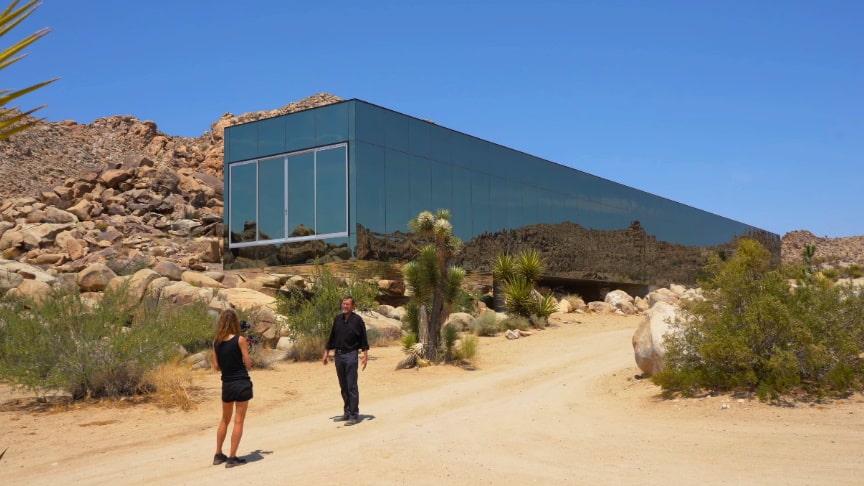Film producers Chris and Roberta Hanley (American Psycho, Virgin Suicides) dropped a tiny prefab onto their Joshua Tree land to use as their desert home, but the town told them that the 12-foot-wide trailer was too skinny, so the couple went bold and created a mirrored home that looks like a fallen skyscraper and that disappears as the day progresses.After walking the property for months, and becoming captivated by the cactus, wildflowers and tiny lichen, Chris Hanley wanted a home that wouldn’t disrupt this delicate landscape.
source/image(PrtSc): Kirsten Dirksen
After being told that the prefab was too narrow and could be considered an ADU for something bigger, Hanley and his architect friend Tomas Osinski (they worked together on American Psycho and Spring Breakers) created a “vertical skyscraper” that didn’t require grading. “They were giving us $500 per month penalties and I talked to the inspector and he said, ‘Look, just build another house and we’ll forget about you.’
So Tomas and I thought, ‘Wow, it would be really good to do nothing.’” explains Hanley, “but as long as we have to do something, he said, ‘Well, if we put all the weight on one side, we can not dig into the ground as much so half the house can be lifted.’”With its huge cantilever, half of the house rests on just concrete pillars. “We didn’t change anything around it,” explains Osinski. “So there’s no grading, there’s no modification of the terrain, we just dropped it there practically.”
Advertisement
The long, skinny mirrored home has been nicknamed “Vertical Skyscraper”, a nod to Hanley’s childhood in New York City, but Hanley’s name for the home is “Invisible House”. All four walls of the home are floor-to-ceiling windows, but despite reflecting the surrounding desert, they’re not mirrors, but solar controlled glass (“solar-cooled, Vitro, PPG, low E glass”) which Tomas showed us didn’t heat up even with the 100-degree July day. They don’t have a problem with birds hitting the glass since, as Osinski explains, birds in the desert mostly just walk from bush to bush./Kirsten Dirksen











